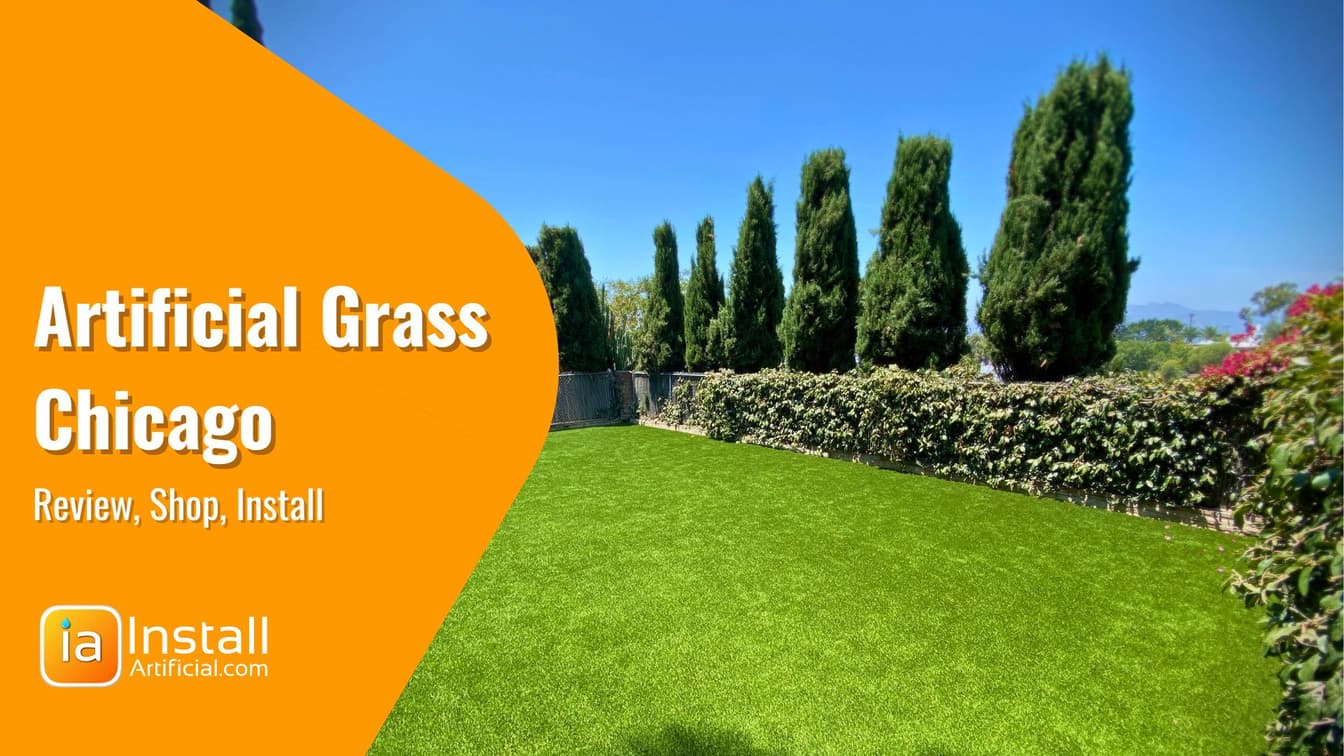
Reveal the growing movement among Chicago locals who are embracing artificial turf as a practical substitute for traditional grass. Examine the driving forces behind...
Welcome to the world of artificial turf—where low-maintenance beauty meets everlasting greenery. In this article, we'll dive into the pros, cons, and environmental impact of artificial grass.

Artificial grass, also known as artificial turf, fake grass, or synthetic turf, has gained popularity as a low-maintenance alternative to natural grass in outdoor spaces. While it offers several advantages over real turf, it also comes with its own set of drawbacks. In this article, we'll dig into the pros and cons of artificial grass across various dimensions including cost, maintenance, aesthetics, durability, pet-friendliness, environmental impact, and more.
One of the primary considerations for homeowners opting for artificial grass is the initial cost. Artificial grass installation typically involves expenses related to materials, labor, and preparation of the surface. The cost per square foot can vary based on the quality of turf products and additional features such as UV resistance and pet-friendly artificial grass. However, despite the higher initial investment, artificial grass often proves cost-effective in the long run due to minimal maintenance requirements.

Artificial grass offers a significant advantage in terms of maintenance. Unlike natural grass that demands regular mowing, watering, and fertilizing, artificial turf is much more maintenance free. It doesn't require watering, mowing, or application of fertilizers and pesticides, saving both time and money. Simply blow away leaves occasionally and brush the fibers as needed. Additionally, synthetic turf is resistant to pests and diseases, eliminating the need for lawn care products.
Artificial grass has come a long way in replicating the appearance of real grass blades. Modern synthetic turf closely resembles natural grass in color, texture, and density, enhancing the aesthetic appeal of outdoor spaces. However, some purists argue that nothing can truly match the beauty of a well-maintained natural lawn, especially in terms of the natural habitat it provides for insects and small animals.
UV resistance is another advantage of artificial grass, as most other synthetic lawn and turf products are designed to withstand prolonged exposure to sunlight without fading or deteriorating. This UV resistance ensures that the vibrant green color of artificial grass remains intact over time, maintaining its aesthetic appeal and visual consistency throughout its lifespan. Additionally, UV-resistant artificial grass is less susceptible to damage from sun exposure, ensuring long-term durability and performance.
Synthetic turf is known for its durability and resilience, making it suitable for high-traffic areas such as sports fields and playgrounds. Unlike natural grass that can become worn and patchy over time, artificial grass maintains its lush green appearance even under heavy use. Properly maintained artificial lawns can withstand years of foot traffic without showing signs of wear and tear.
Pet owners often appreciate the benefits of artificial grass, particularly its durability. Pet-friendly artificial grass is designed to allow for easy cleanup of pet waste and is typically made from materials that are non-toxic and easy to sanitize. Dogs love playing on artificial turf, and pet turf installations provide a safe and comfortable outdoor space for pets to enjoy.
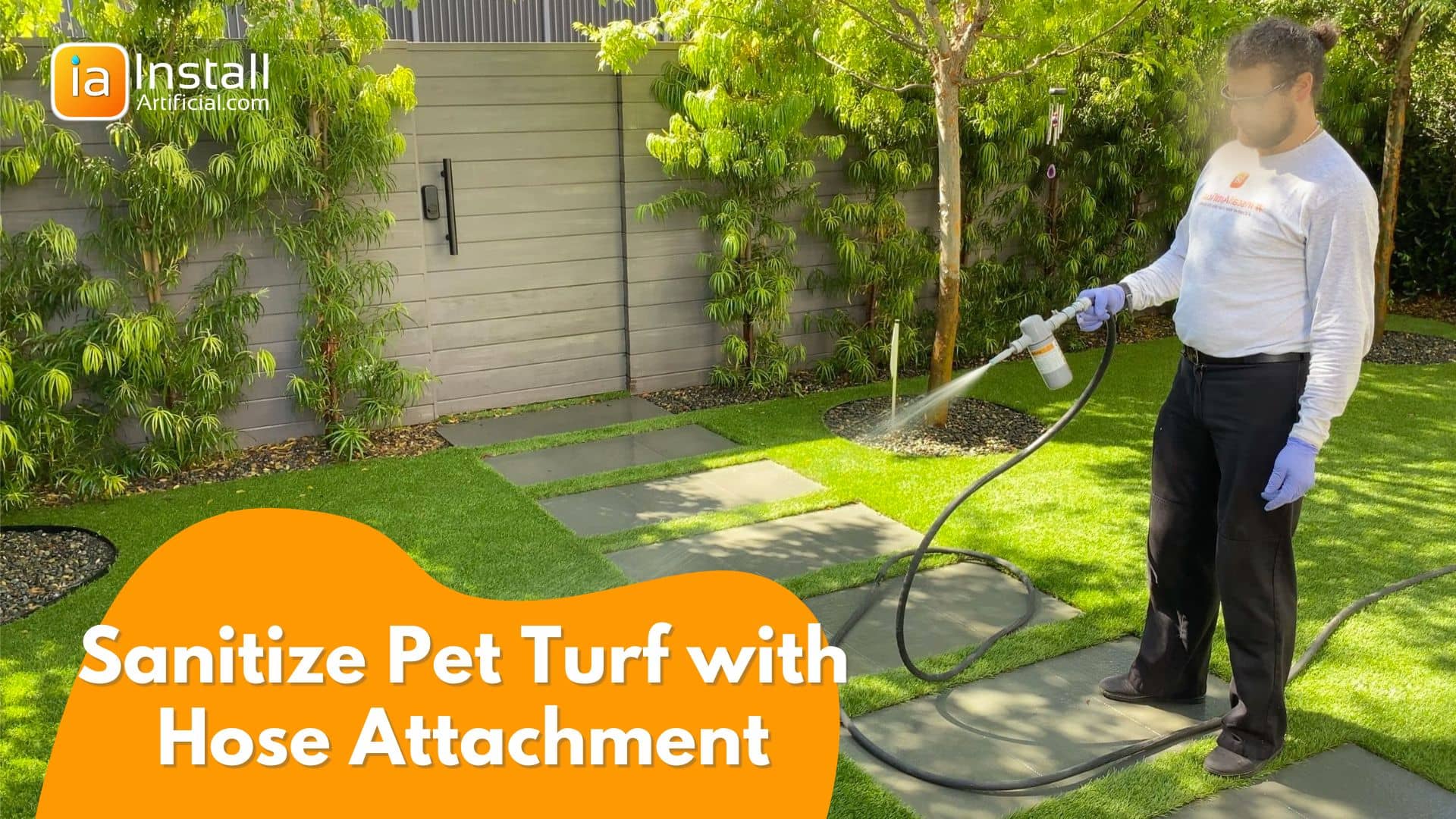
It's important to remember that while regular artificial lawns are considered very low maintenance, pet turf requires consistent sanitizing to remain odorless. Without proper infills drainage and cleaning practices, urine will sit underneath the surface and grow bacteria. So, if you're not up for consistently rinsing and the surface with a sanitizer maybe artificial grass isn't right for you!
While an artificial lawn can be eco friendly and offers water conservation benefits in regions experiencing drought conditions, it raises environmental concerns related to its manufacturing process and disposal. Synthetic turf is often made from plastics, which contribute to air pollution and waste management issues.
Join us in our commitment to sustainability by visiting our webpage dedicated to our recycling initiative for artificial grass. Together, we can make a difference by keeping plastic out of landfills and promoting a circular economy. Learn more about how you can be a part of this important initiative and contribute to a greener, more sustainable future.
In an age where we all want to avoid harmful chemicals, homeowners are more careful than ever. There have been concerns about the presence of polyfluoroalkyl substances (PFAS) in artificial grass, particularly in the rubber infill historically used for cushioning. While some installations have indeed utilized rubber infill containing PFAS in the past, this practice is becoming outdated due to its environmental and health impacts. Additionally, the overall risk of exposure to PFAS from artificial grass is minimal compared to other sources in daily life.
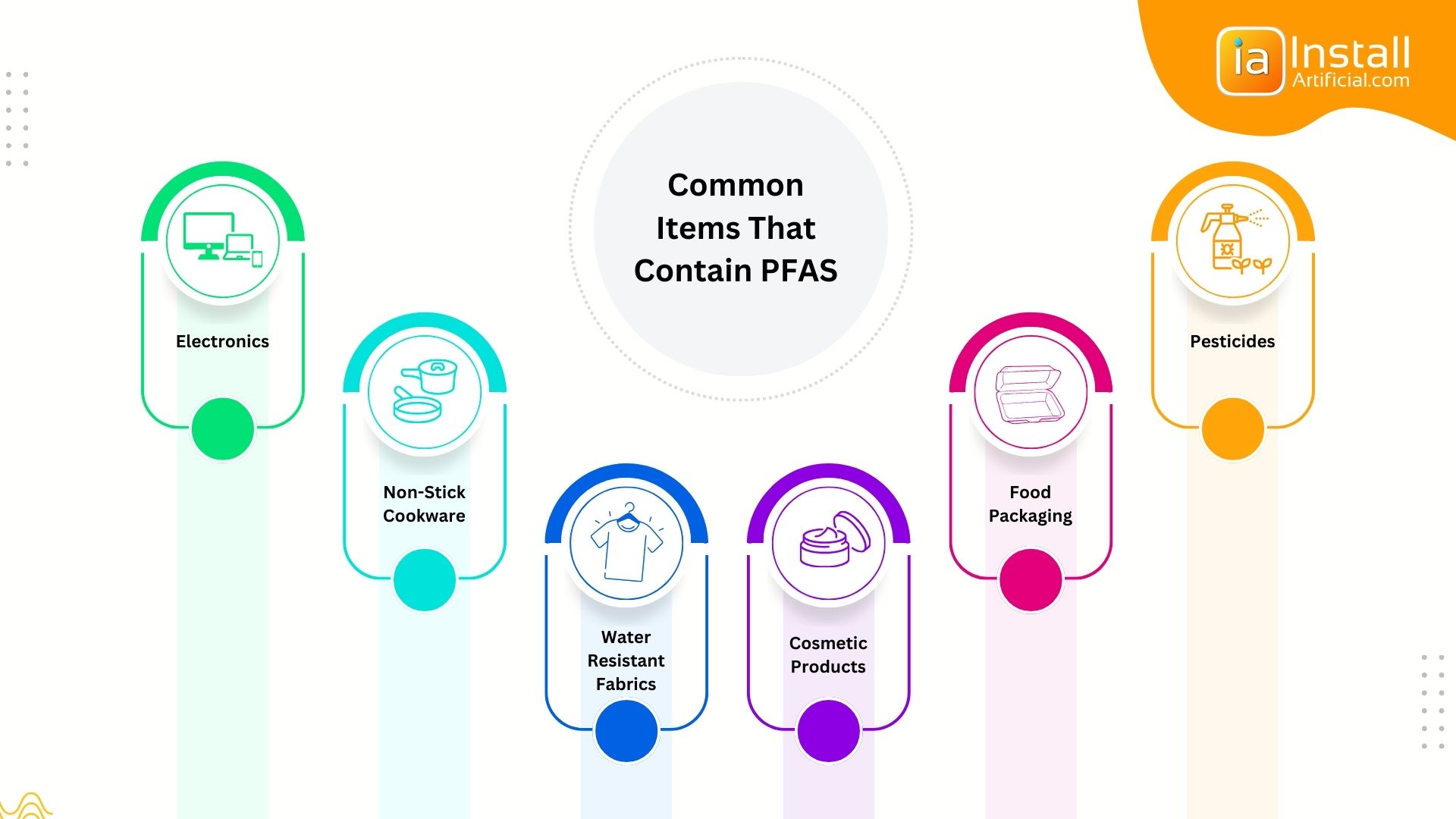
PFAS are found in various everyday items like food packaging and cosmetics, and while trace amounts may be present in some artificial grass products, studies suggest they pose limited health risks. Manufacturers are increasingly shifting towards PFAS-free infill materials, such as natural alternatives like cork and walnut shell, which offer comparable performance without the environmental concerns associated with rubber infill.
In essence, while concerns about PFAS in artificial grass are valid, the industry is actively addressing them by moving towards safer and more sustainable infill options. Homeowners can now enjoy the benefits of artificial grass without compromising their health or the environment.
Artificial grass exhibits remarkable resilience to various weather conditions, making it a reliable landscaping option for diverse climates. Unlike natural grass, which can become patchy and brown during periods of drought or heavy rainfall, synthetic turf maintains its lush green appearance year-round, regardless of weather fluctuations. This weather resilience ensures that homeowners and property managers can enjoy and maintain a vibrant and inviting outdoor space regardless of environmental conditions and climate change.
One of the criticisms leveled against artificial grass is its tendency to retain heat, especially in regions with high temperatures. Unlike natural grass, which stays relatively cool even in direct sunlight, synthetic turf can absorb and retain heat, potentially causing discomfort for individuals and pets. Cooling measures such as shaded areas, or opting for low density/lighter-colored turf products can mitigate heat buildup on artificial lawns.
When sunlight reflects onto artificial grass, it can bounce off and create really hot spots, kind of like a magnifying glass. These hot spots can be uncomfortable or even damage the grass. To stop this, you can add things like shades or trees to block some of the sunlight.
One of the key advantages of artificial grass is its versatility in terms of installation and design. Unlike natural grass, which may struggle to grow in irregular or confined spaces, synthetic turf can be easily cut and shaped to fit any area or contour. Whether it's a small backyard, rooftop terrace, or narrow pathway, artificial grass can be customized to create a seamless and visually appealing landscape that maximizes usable outdoor space.
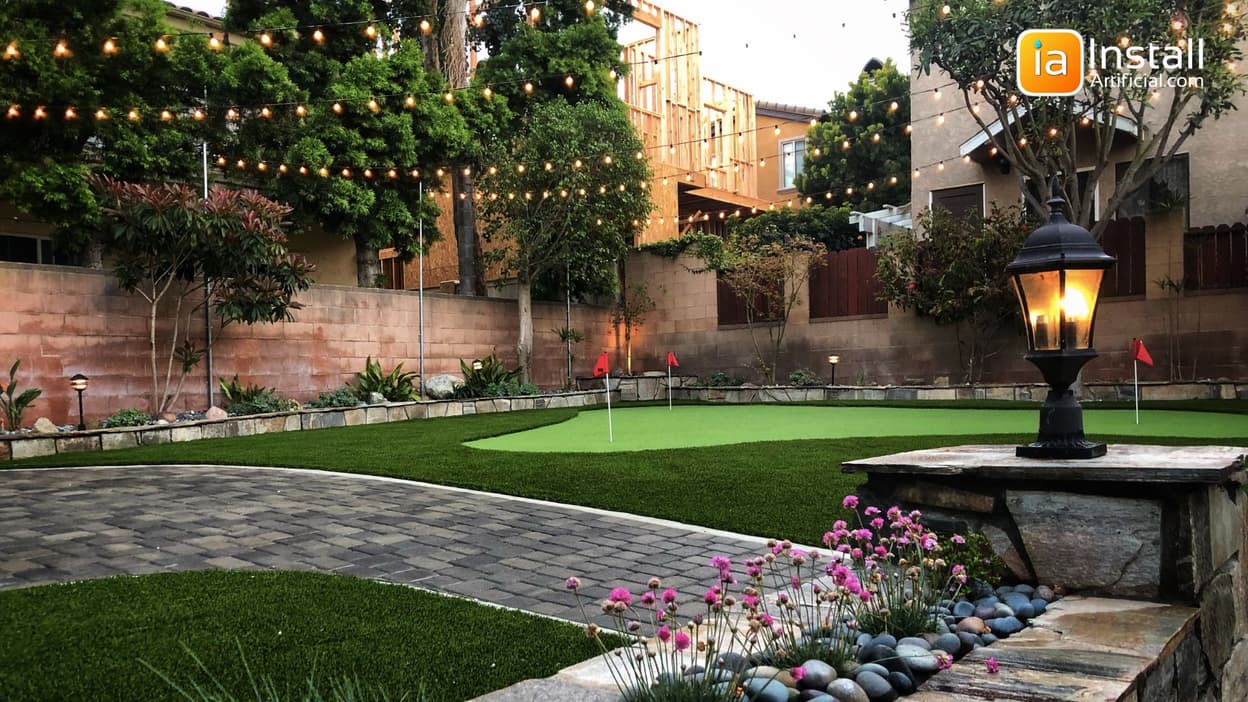
This flexibility in design allows homeowners and landscape architects to unleash their creativity and transform even the most challenging spaces into vibrant green oases. From curved borders and intricate patterns to precise cutouts for trees and flower beds, artificial grass offers endless possibilities for customization and personalization. Additionally, synthetic turf can be installed on various surfaces, including balconies, decking, and gravel, expanding its application beyond traditional lawn areas. Get a free quote in just a few clicks below!
The choice of infill material can significantly impact the performance and environmental sustainability of artificial grass. While crumb rubber made from recycled tires has been a popular choice in the past, concerns about its environmental and health impacts have led to the development of alternative infill materials. Natural infills such as cork, coconut husk, and walnut shell are gaining popularity due to their sustainability and safety. These natural materials offer comparable performance characteristics to rubber infill while minimizing environmental risks and enhancing the overall sustainability of artificial grass installations.

Artificial grass is touted as a water-saving alternative to natural turf, particularly in areas facing water scarcity and drought conditions. By eliminating the need for watering, synthetic lawns contribute to water conservation efforts and reduce reliance on irrigation systems. Not only are you aiding in saving a scarce resource, but you'll save money on your water bill!
Overall, artificial grass presents a low-maintenance alternative to natural grass with several benefits including less water usage, durability, and pet-friendliness. However, it's essential to weigh these advantages against sustainability concerns, heat retention issues, and the initial cost of installation. Ultimately, the decision to opt for artificial grass or natural grass depends on individual preferences and budget constraints.

Reveal the growing movement among Chicago locals who are embracing artificial turf as a practical substitute for traditional grass. Examine the driving forces behind...
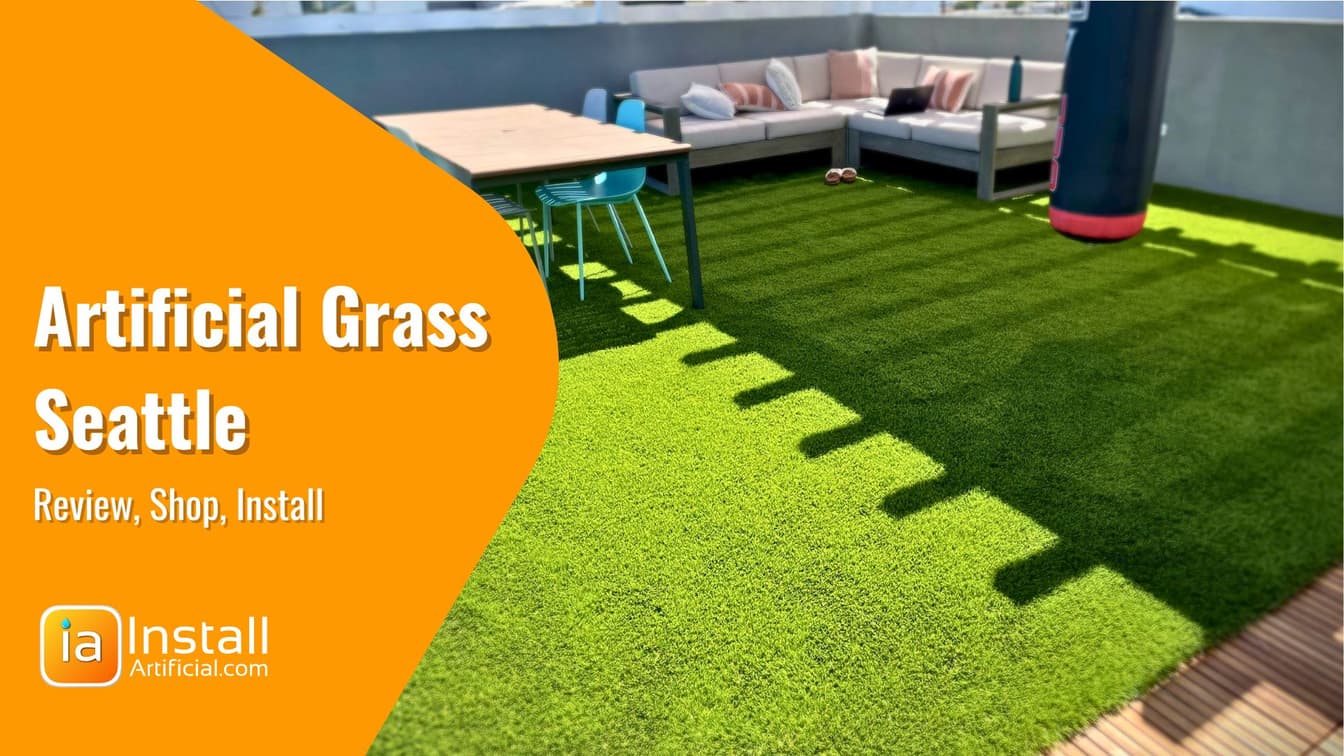
Discover the growing trend among Seattle homeowners who are embracing the installation of artificial turf as a replacement for traditional grass. Uncover the driving...